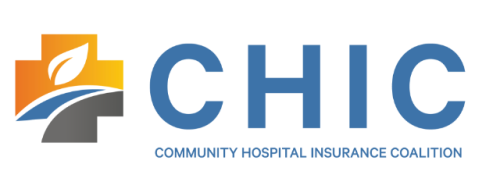Congress Passes Spending Bill that Repeals Three Major ACA Taxes, Extends PCORI
New Summary of Benefits and Coverage Template Will Be Required for 2021
Final Rule on Hospital Price Transparency Released
Appeals Court Affirms Ruling Invalidating ACA Individual Mandate

Congress Passes Spending Bill that Repeals Three Major ACA Taxes, Extends PCORI
On December 20, 2019, the House and Senate, with the final signature from President Trump, passed a bipartisan legislative package of spending bills to avoid a government shutdown. This package of bills is collectively referred to as the Further Consolidated Appropriations Act, 2020 (the “Act”). The Act includes a permanent repeal of three Affordable Care Act (ACA) taxes: the tax on high-cost health plans (the so-called “Cadillac Tax”), the Health Insurance Tax (HIT tax), and the medical device tax. Overall, the repeal of these ACA taxes may result in at least $300 billion in lost revenue to the government; however, the bill brings relief to employers and consumers, who may have experienced tax payments, increased health premiums and other costs. The repeal of the HIT tax is effective as of January 1, 2021, and the medical device tax is repealed as of January 1, 2020. The Cadillac Tax was already delayed until 2022, and thus will never take effect. The Patient-Centered Outcomes Research Institute (PCORI) fee has also been extended to 2029 (i.e., it will apply to plan years ending on or before September 30, 2029).
PCORI Fee Extension
The PCORI fee is now extended to plan years ending on or before September 30, 2029. PCORI fee extensions have been discussed frequently and have been included in previously introduced bills, such as the Protecting Access to Information for Effective and Necessary Treatment and Services Act (PATIENTS Act) that was approved by the House Ways and Means Committee in June 2019. The amount due per life covered under a policy will be adjusted annually, as it has been previously. Insurers of fully insured health plans and employers with self-funded group health plans will continue to have to pay this fee until 2029 or 2030 (depending on plan year).
The PCORI was established as part of the ACA to conduct research to evaluate the effectiveness of medical treatments, procedures, and strategies that treat, manage, diagnose, or prevent illness or injury. The research considers both the effectiveness of the treatment, as well as an individual’s decisions and outlook regarding the treatment.
The Cadillac Tax
The Cadillac tax is a 40% tax on the cost of health coverage offered by employers that exceeds a certain amount. For 2019, those thresholds were $11,200 for single and $30,100. If the total cost of coverage (including pre-tax FSA/HSA/HRA contributions) exceeded the threshold, the 40% tax would apply. The Cadillac Tax was intended to raise revenue for the ACA, while encouraging employers to offer less generous benefits that would purportedly lead to wage increases. It was also meant to help lower healthcare costs and overutilization by offering less robust coverage. The tax has been repeatedly delayed since the inception of the ACA. It was originally intended to be effective in 2018 but was delayed twice, first until 2020 then until 2022. Therefore, it will never take effect. Both Republicans and Democrats alike have moved for repealing the Cadillac Tax.
With the repeal of the Cadillac tax, employers offering generous health plans no longer have to be concerned with being subject to a tax after a certain point. Likewise, the tax could have disproportionately affected lower-income employees as well as unions, as more generous benefits are often negotiated instead of pay raises. Similarly, states where insurance is more expensive in general—such as Alaska—would have also seen a greater negative effect if the Cadillac tax moved forward.
The HIT Tax
The Health Insurance Tax—also known as the HIT Tax (the “t” being redundant)—is essentially a sales tax on insurance. The tax was in effect from 2014 – 2016 and in 2018 but was suspended in 2017 and 2019 as a result of lobbying. It is repealed effective as of January 1, 2021. Therefore, it is in effect for 2020. In general, the HIT tax is an annual fee charged to insurance companies that provide medical, dental, or vision policies. The tax is divided among the insurers, based on their value and market share of business, focusing on the premium amount. When passed through to employers, the HIT tax was typically in the range of 2% to 4% premium.
With the repeal of the HIT tax, insurers can focus on providing benefits and charging premiums that are not related to having a tax associated with how much is made from the premium amount. While this may not have a direct correlation with premium increases, there could be some reprieve associated with the repeal of this particular tax
The Medical Device Tax
The ACA’s medical device tax is a 2.3% excise tax on medical devices—such as hospital beds or an MRI machine—that are sold within the United States. The tax is imposed on the manufacturer, producer, or importer of the device. The Act repeals the medical device tax effective January 1, 2020. The tax was in effect from 2013 to 2015 and has been suspended from 2016 through 2019.
The medical device tax had bipartisan support for repeal, caused by concerns that the tax would chill research efforts, increase the price of devices in order to recover lost profit, and discourage certain sales. There was also a concern that the tax could cause lost jobs, due to cutting back on staff in order to compensate for having to pay for the tax. One study indicated that 29,000 jobs were lost while the tax was in effect.
What to Expect Next
With the repeal of these taxes, there will need to be recalculations on the cost of administering the ACA, as well as overall effect on the tax system within the United States. The repeal of these taxes come as a relief to many; however, the upcoming election in 2020 could have an effect on where the nation goes from here. Next year may bring additional legislation regarding surprise billing or drug pricing reform.
New Summary of Benefits and Coverage Template Will Be Required for 2021
Recently, the Departments of Labor (DOL) and Health and Human Services (HHS) issued an updated template and related materials for the summary of benefits and coverage (SBC). These materials are required to be used for plan years beginning on or after Jan. 1, 2021. This means that the updated template must be used for the 2021 plan year’s open enrollment period.
The SBC is a concise document providing simple and consistent information about health plan benefits and coverage.
Employers should prepare to use the new SBC template and related materials for the 2021 plan year. Prior to the beginning of the 2021 plan year:
- Self-funded plan sponsors should ensure that they use the new template.
- Employers with insured plans should make sure the carrier is providing the correct version of the template.
For more information, contact us today.
Final Rule on Hospital Price Transparency Released
On Friday, Nov. 15, 2019, the Trump administration released its final rule regarding hospital price transparency. This final rule will take effect Jan. 1, 2021, a year later than originally proposed.
The Centers for Medicare and Medicaid Services (CMS) had been listening to feedback on a proposed version of the rule for the past four months, culminating in this latest update.
What’s included in the final rule?
Hospitals will now be required to provide easily accessible billing information to patients. This means having all standard charges available online and in one single data file that can be “read by other computer systems,” according to a CMS press release.
The charges listed would include “the gross charges, payer-specific negotiated charges, the amount the hospital is willing to accept in cash from a patient, and the minimum and maximum negotiated charges,” according to the release.
As part of the final rule, CMS was granted more authority over enforcement. Specifically, the department has greater capability to audit hospitals and issue fines of $300 per day to those who are noncompliant.
What’s next?
The rule won’t be effective until January 2021. In that time, hospitals will be working to make the applicable data available online, if it isn’t already.
Appeals Court Affirms Ruling Invalidating ACA Individual Mandate


